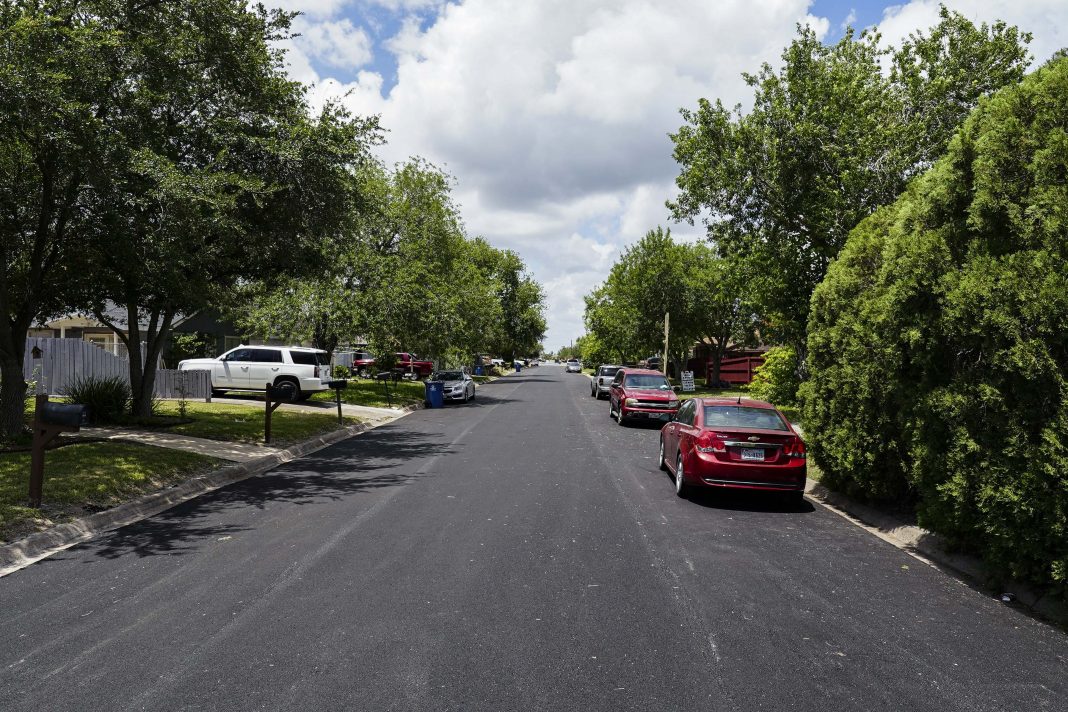SAN BENITO — Officials here are bracing to deal with rising asphalt costs and chances of supply cuts two months after crews launched a $700,000 project aimed at paving 20 streets.
The city’s contract with Elsa-based Frontera Materials expires in October, when officials will be facing jumps in asphalt prices stemming from the coronavirus pandemic’s economic slowdown.
“We have a contract with the price locked in,” Mayor Rick Guerra said Tuesday.
Now, crews are working against the clock to pave streets before the contract expires.
“Hopefully, we can do the streets on the list,” Guerra said. “Our workers are working even on weekends. They’re trying their best to do the streets as best they can.”
So far, crews have completed work on Brazos Drive, Colorado Drive, Lavaca Drive, San Jacinto Drive and Sabine Drive, city spokesman David Favila said.
Facing soaring prices
Meanwhile, officials are three months away from facing rising asphalt prices likely to lead to cuts in future street projects or boosts in spending.
Since mid 2021, the price of asphalt has jumped from $60 a ton to $82.50 a ton in Brownsville, Liz Gonzalez, Frontera’s office manager, said, adding prices continue climbing.
“It is inevitable that the city will have to deal with these rising costs as well as a supply issue as not only are costs going up, there is also an availability issue. Materials that are available today may not be readily available later,” Favila stated. “Right now, the city continues to move forward with rehabilitating the streets that were approved for rehabilitation by the city commission earlier this year based on prices for materials the city secured through October 2022.”

‘Difficult budget cycle’
At City Hall, officials are planning the upcoming fiscal year’s general fund budget.
“Moving forward, the commission will have to look closely at the upcoming budget and see how these costs will affect future projects,” Favila stated.
Come October, officials will be working with an extra-tight budget.
“Our budget is not very large,” Guerra said. “Everything’s going up like crazy. We’re having to juggle everything. We have to somehow work with what we’ve got.”
Across the country, governments are facing mounting challenges as they plan for the upcoming fiscal year.
“It’s going to be a difficult budget cycle for sure,” Commissioner Pete Galvan stated.
Working against the clock
This year, crews are working on about 84 blocks of streets after the city bought a new paving machine.
“This is a dire-need project for the citizens,” Commissioner Rene Garcia said. “We have two crews working on them. They’re completing streets listed. We have to continue. The longer we take, the more streets are accumulated that need repair.”

Background
For decades, residents have cursed San Benito’s pockmarked streets as one of the biggest problems facing the city, blaming the deep potholes for gouging their cars’ wheels and hammering suspensions.
While struggling with San Benito’s low tax base, many of the city’s past administrations have poured millions into patching and paving city blocks.
But too many years of neglect have made catching up harder and harder with every season of rain, traffic and decay.
Last year, commissioners funded a $1 million street project.
To fund the project, City Manager Manuel De La Rosa pulled $550,000 from the city’s $4 million reserve, bolstering the annual $450,000 street repair account to come up with the $1 million price tag.





